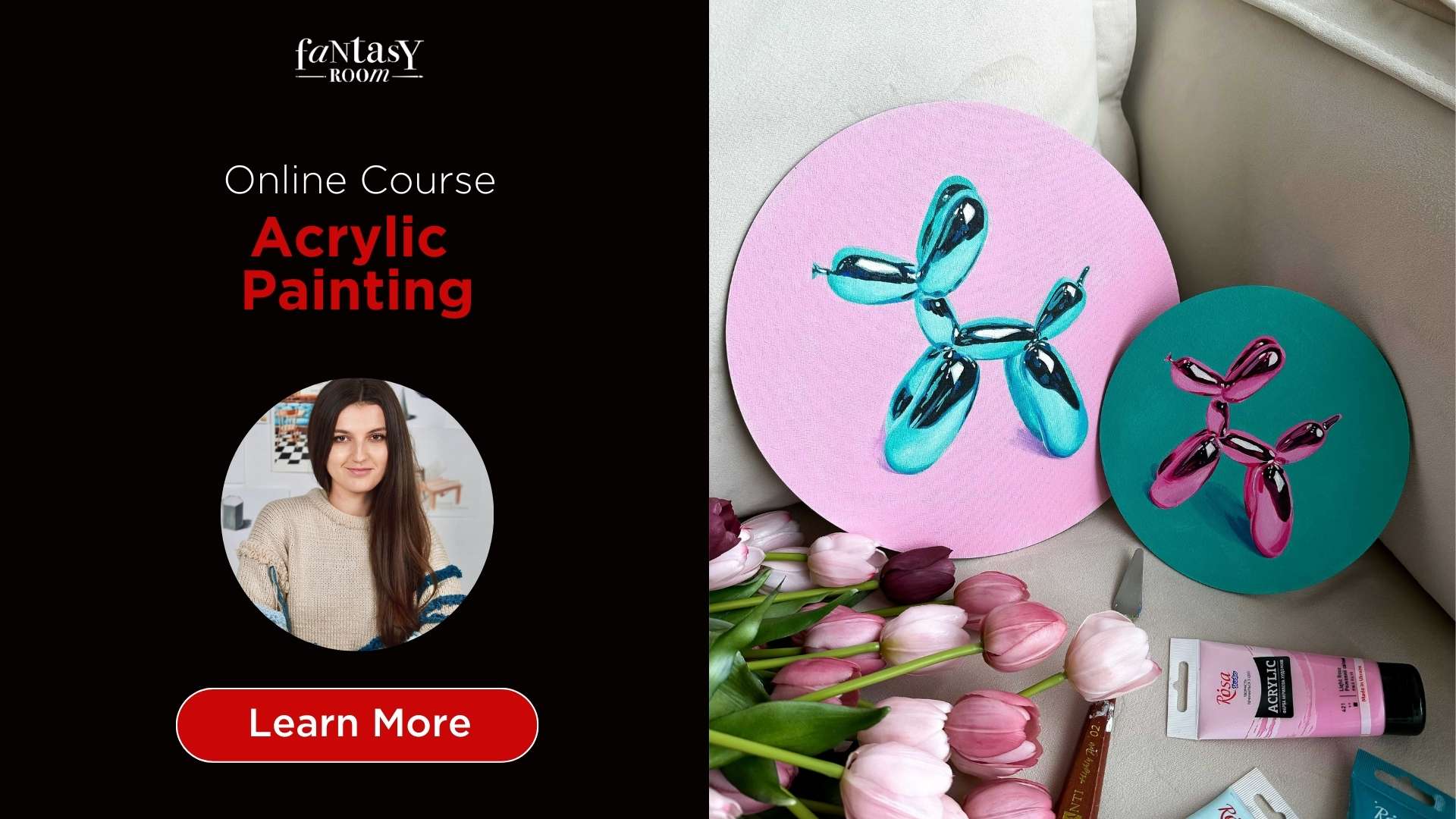Embarking on a journey into the vibrant world of acrylic painting is an exhilarating venture, but even the most seasoned artists encounter common pitfalls along the way. In this article, we delve into the "Top 5 Acrylic Painting Mistakes" that both beginners and experienced painters often face. Whether you're looking to refine your technique or seeking guidance for your first masterpiece, understanding and avoiding these errors will significantly enhance your acrylic painting prowess. Join us as we navigate through these challenges and uncover the keys to unlocking your full artistic potential with acrylics.
Mistake 1: drawing everything in 1 layer

One prevalent mistake that often hinders the progress of budding acrylic painters is the tendency to confine their entire artistic endeavor within a single layer. Beginners, eager to capture every detail in one stroke, may inadvertently limit the potential depth and vibrancy of their creations. This oversight not only restricts the exploration of textures and tones but also undermines the versatility that acrylic paints inherently possess.
A transformative solution to this common pitfall lies in the strategic implementation of multiple layers, a technique that seasoned artists swear by. By adopting a methodical approach with at least 2-3 layers, beginners can unlock a spectrum of possibilities. One key aspect of this layered technique is the incorporation of an imprimatura—a foundational toned layer applied to the canvas before the main painting process begins. The imprimatura not only establishes a harmonious undertone but also provides a base that significantly influences the overall mood and color scheme of the artwork.
Embracing the power of layers, particularly with the thoughtful use of an imprimatura, allows artists to build depth gradually, enhancing the luminosity and subtleties of their acrylic paintings. This invaluable technique not only addresses the common mistake of attempting to capture everything in one layer but also opens doors to a more nuanced, visually compelling, and professional-looking final result.
A transformative solution to this common pitfall lies in the strategic implementation of multiple layers, a technique that seasoned artists swear by. By adopting a methodical approach with at least 2-3 layers, beginners can unlock a spectrum of possibilities. One key aspect of this layered technique is the incorporation of an imprimatura—a foundational toned layer applied to the canvas before the main painting process begins. The imprimatura not only establishes a harmonious undertone but also provides a base that significantly influences the overall mood and color scheme of the artwork.
Embracing the power of layers, particularly with the thoughtful use of an imprimatura, allows artists to build depth gradually, enhancing the luminosity and subtleties of their acrylic paintings. This invaluable technique not only addresses the common mistake of attempting to capture everything in one layer but also opens doors to a more nuanced, visually compelling, and professional-looking final result.
Mistake 2: using only one brush

A prevalent misstep for beginners venturing into the world of acrylic painting is the reliance on a single brush for their entire artistic journey. While the comfort of familiarity is understandable, limiting oneself to one brush hinders the exploration of diverse textures, strokes, and effects that acrylics can offer. This singular approach often results in artworks that lack the dynamic and expressive qualities achievable with a range of brushes.
To overcome this common pitfall, it's crucial for aspiring artists to embrace the vast array of brushes available. Each brush type brings a unique set of characteristics to the canvas, from the broad strokes of a flat brush to the intricate details achievable with a fine liner. Experimenting with different brushes not only expands one's technical repertoire but also allows for greater creative expression. Whether it's a round brush for delicate lines, a fan brush for textural effects, or a filbert brush for versatile strokes, the variety of brushes empowers artists to elevate their work to new dimensions.
Discover the transformative potential of a diverse brush collection and witness how each stroke contributes to the overall depth and richness of your acrylic creations.
To overcome this common pitfall, it's crucial for aspiring artists to embrace the vast array of brushes available. Each brush type brings a unique set of characteristics to the canvas, from the broad strokes of a flat brush to the intricate details achievable with a fine liner. Experimenting with different brushes not only expands one's technical repertoire but also allows for greater creative expression. Whether it's a round brush for delicate lines, a fan brush for textural effects, or a filbert brush for versatile strokes, the variety of brushes empowers artists to elevate their work to new dimensions.
Discover the transformative potential of a diverse brush collection and witness how each stroke contributes to the overall depth and richness of your acrylic creations.

Embark on a transformative artistic journey with our online course, "Acrylic Painting," designed to help you navigate and overcome most of th Acrylic Painting Mistakes. In this comprehensive course, we delve into a thorough materials review, uncovering the best acrylic paints and brushes that will become your artistic allies. Our step-by-step tutorials, led by professional tutors, guide you through the mesmerizing process of creating stunning abstract artworks, capturing the essence of still life compositions, and painting breathtaking landscapes that transport you to serene vistas.
Mistake 3: choosing an inappropriate canvas size

A common misjudgment among novice acrylic painters is the eagerness to tackle expansive canvases without considering the impact on their developing skills. While ambition is commendable, opting for an overly large canvas can inadvertently pose challenges for beginners. Covering vast surfaces requires a level of skill and control that may be beyond the reach of those still honing their craft. This oversight often leads to artworks that lack the desired cohesion and detail, as the artist struggles to navigate the expanse of the canvas.
A common misjudgment among novice acrylic painters is the eagerness to tackle expansive canvases without considering the impact on their developing skills. While ambition is commendable, opting for an overly large canvas can inadvertently pose challenges for beginners. Covering vast surfaces requires a level of skill and control that may be beyond the reach of those still honing their craft. This oversight often leads to artworks that lack the desired cohesion and detail, as the artist struggles to navigate the expanse of the canvas.
A common misjudgment among novice acrylic painters is the eagerness to tackle expansive canvases without considering the impact on their developing skills. While ambition is commendable, opting for an overly large canvas can inadvertently pose challenges for beginners. Covering vast surfaces requires a level of skill and control that may be beyond the reach of those still honing their craft. This oversight often leads to artworks that lack the desired cohesion and detail, as the artist struggles to navigate the expanse of the canvas.
Mistake 4: oversimplifing color choices

Another prevalent misstep among novice acrylic painters is the tendency to oversimplify color choices, particularly when depicting elements like grass. A common oversight involves using a singular green tone, resulting in a flat and one-dimensional representation. While simplicity has its merits, limiting oneself to a single color fails to capture the richness and complexity of the natural world. The vibrancy of grass, for instance, extends far beyond a basic green; it involves a dynamic interplay of hues ranging from warm yellows and earthy browns to cool blues and vibrant reds.
To overcome this common pitfall, beginners are encouraged to experiment with a broader color palette. Adding unexpected tones, such as pops of yellow, hints of red, or even deep navy for shading, introduces depth and visual interest to the artwork. This approach not only mirrors the diverse colors found in nature but also allows for a more nuanced and captivating representation. By breaking free from the constraints of a monochromatic palette, artists can breathe life into their creations, creating vibrant, multi-dimensional works that resonate with viewers.
To overcome this common pitfall, beginners are encouraged to experiment with a broader color palette. Adding unexpected tones, such as pops of yellow, hints of red, or even deep navy for shading, introduces depth and visual interest to the artwork. This approach not only mirrors the diverse colors found in nature but also allows for a more nuanced and captivating representation. By breaking free from the constraints of a monochromatic palette, artists can breathe life into their creations, creating vibrant, multi-dimensional works that resonate with viewers.
Mistake 5: fragmentation

A common pitfall encountered by beginner acrylic painters is the tendency towards fragmentation, where intense focus is placed on a singular part of the artwork, leaving the rest of the canvas untouched or underdeveloped. This approach can result in an imbalanced composition, as the detailed section competes for attention with the neglected areas. The risk is that the viewer's eye may be drawn solely to the intricately worked section, detracting from the overall harmony and cohesion of the piece.
To address this mistake, artists are encouraged to adopt a more holistic approach to their work. Rather than fixating on one area, distribute attention evenly across the canvas. By establishing a clear plan and systematically working on different sections, artists can ensure that every part of the artwork receives due consideration. This not only fosters balance but also allows for a more harmonious development of the painting as a whole.
To address this mistake, artists are encouraged to adopt a more holistic approach to their work. Rather than fixating on one area, distribute attention evenly across the canvas. By establishing a clear plan and systematically working on different sections, artists can ensure that every part of the artwork receives due consideration. This not only fosters balance but also allows for a more harmonious development of the painting as a whole.
To sum up
In the realm of acrylic painting, the journey from novice to master is both exhilarating and instructive. As we conclude our exploration of the "Top 5 Acrylic Painting Mistakes," it is essential to recognize that these errors are not stumbling blocks but rather stepping stones toward artistic growth. By acknowledging and learning from these common pitfalls—ranging from oversimplified color choices to the dangers of fragmentation—artists can embark on a transformative path toward mastery. Embrace the versatility of acrylics, experiment with layers and diverse brushes, choose canvases thoughtfully, and explore the richness of a varied color palette. Each mistake unveils an opportunity to refine technique, develop a discerning eye, and ultimately, to cultivate a unique artistic voice. Let the lessons learned guide you towards a more expressive, balanced, and fulfilling acrylic painting journey.











